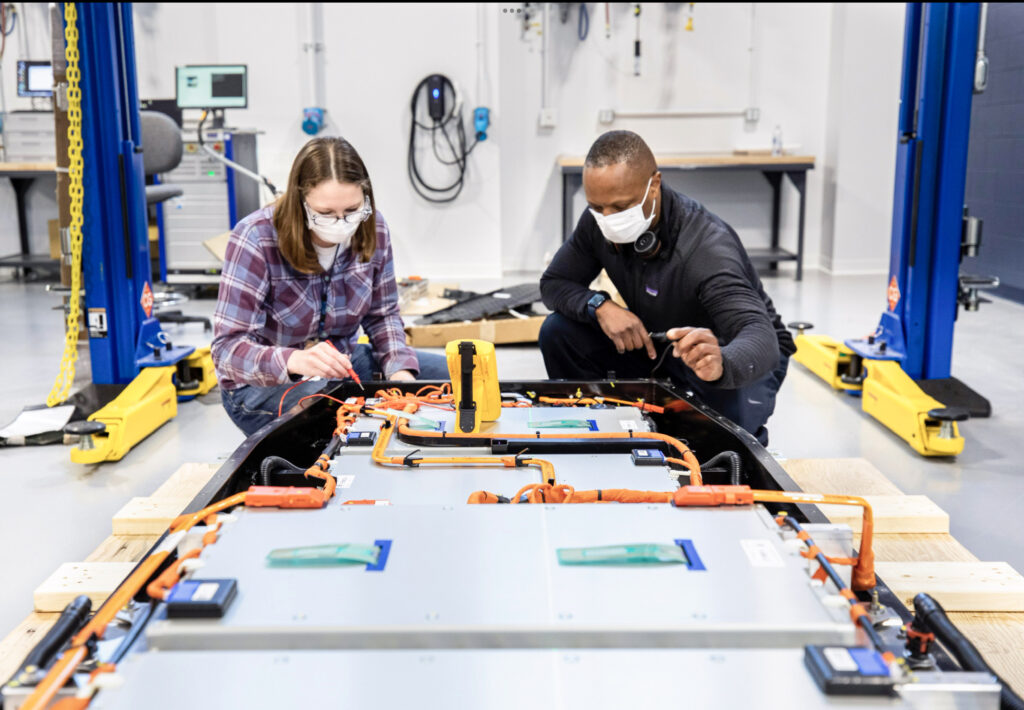What is a solid-state battery?
Simple. It’s a battery with no runny stuff inside. This tech will lead to better EV batteries, for reasons we’ll get to in a moment.
Solid-state batteries being developed for automotive applications use lithium-based chemistries, just like the batteries in EVs you can buy today. But instead of containing a liquid or semi-liquid electrolyte, the electrolyte in solid-state cells is made of … you guessed it … something solid.
EV FAQ: All your electric car questions answered
READ MORE: Will my battery go flat if I leave my EV parked for too long?
READ MORE: Do EV batteries wear out?
So what’s an electrolyte? To use an analogy, it’s a busy superhighway for electrons as they travel backwards and forwards between battery electrodes. The electrons head one way during charging and the opposite direction as the battery puts out power.
Decades ago, checking the electrolyte level in 12-volt lead-acid car batteries was a regular task. Sometimes they needed to be topped up with distilled water to maintain the sulphuric acid electrolyte solution at the right level. Many modern 12-volt batteries instead use a goopy acidic gel electrolyte, removing the need for maintenance.

So what are solid electrolytes made of?
Two types of material are used. One is ceramic, but with chemical properties that aren’t to be found in the China plate you eat your dinner off. Polymer-based plastic is the other, but it’s nothing like the Tupperware container you store leftovers in.
The sophisticated make-up of solid electrolytes makes them a superior superhighway for electrons. Because of this, batteries with cells using solid electrolytes will store more energy, deliver higher power outputs and charge faster.
But wait, there’s more…
Solid-state batteries will be safer, too. The electrolytes currently used in lithium-ion batteries are organic solvents that also happen to be flammable. They fuel the flames you see in YouTube videos of EVs with their batteries burning. This problem disappears with solid-state batteries.

Having a solid electrolyte also means more space-efficient battery packs, as there’s no need for a casing to contain a runny liquid. For this reason it’s thought solid-state tech will permit engineers to create battery packs in a wider variety of shapes than the cubic clumps of current designs.
Another benefits is greater temperature tolerance, including much better performance in extreme cold.
While most major car makers are known to be working on solid-state battery tech, often in collaboration with specialist outfits, there remain obstacles to their adoption. Cost is one of them. Another is the challenge of scaling up stuff that works in the lab for industrial-scale production.




